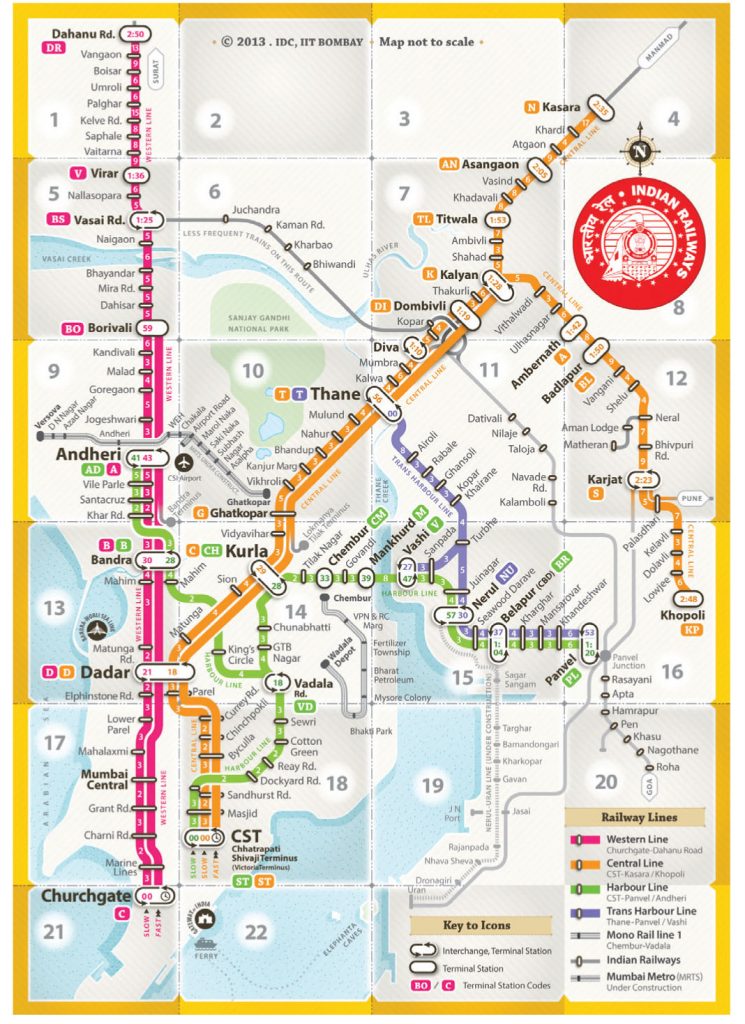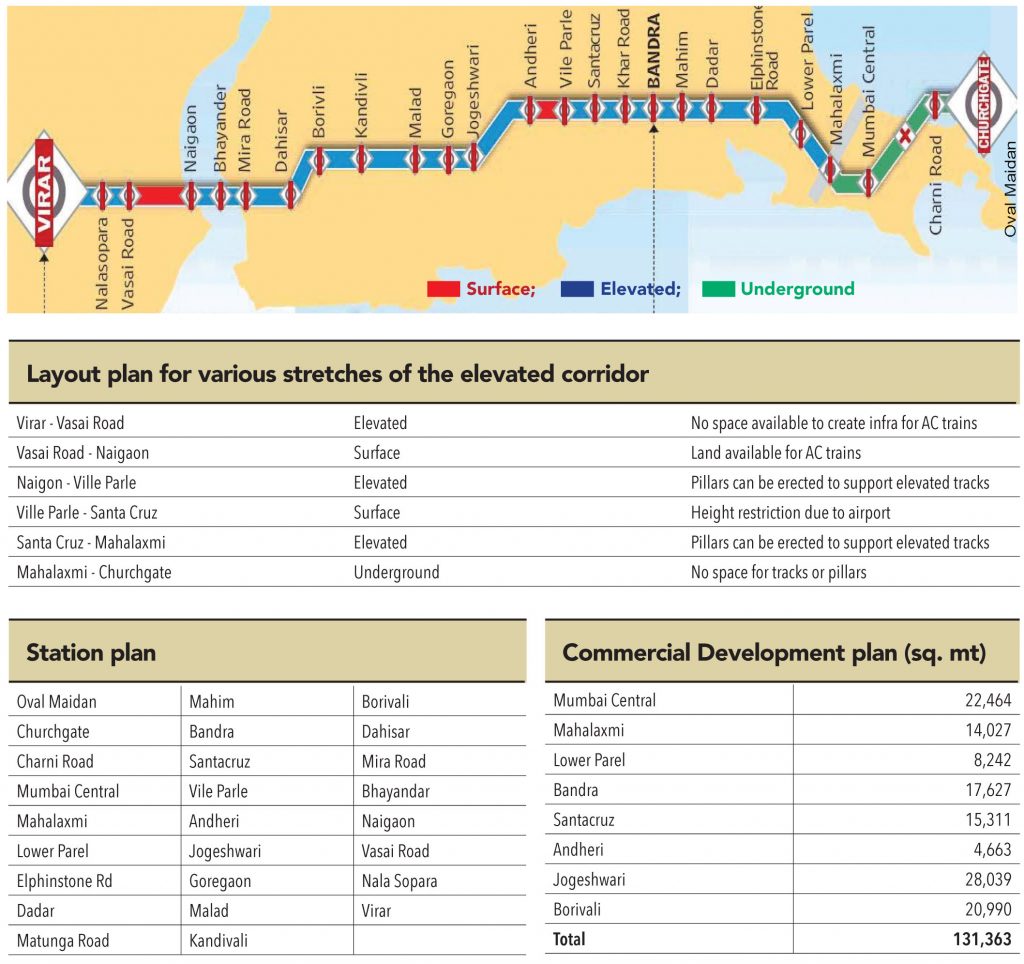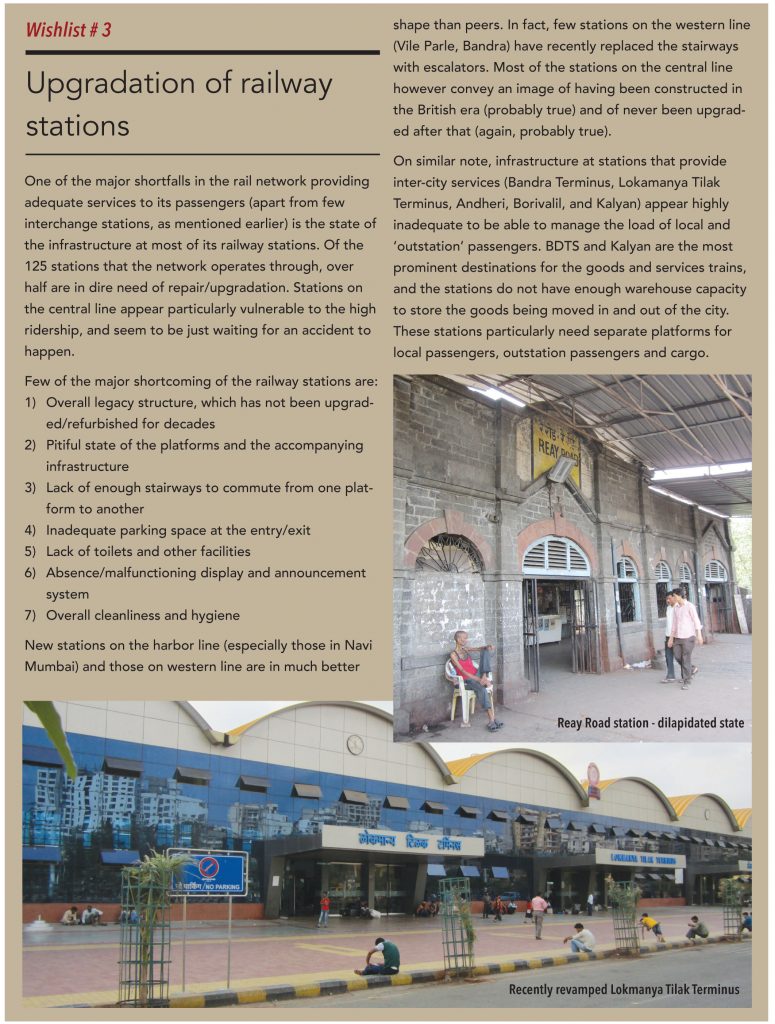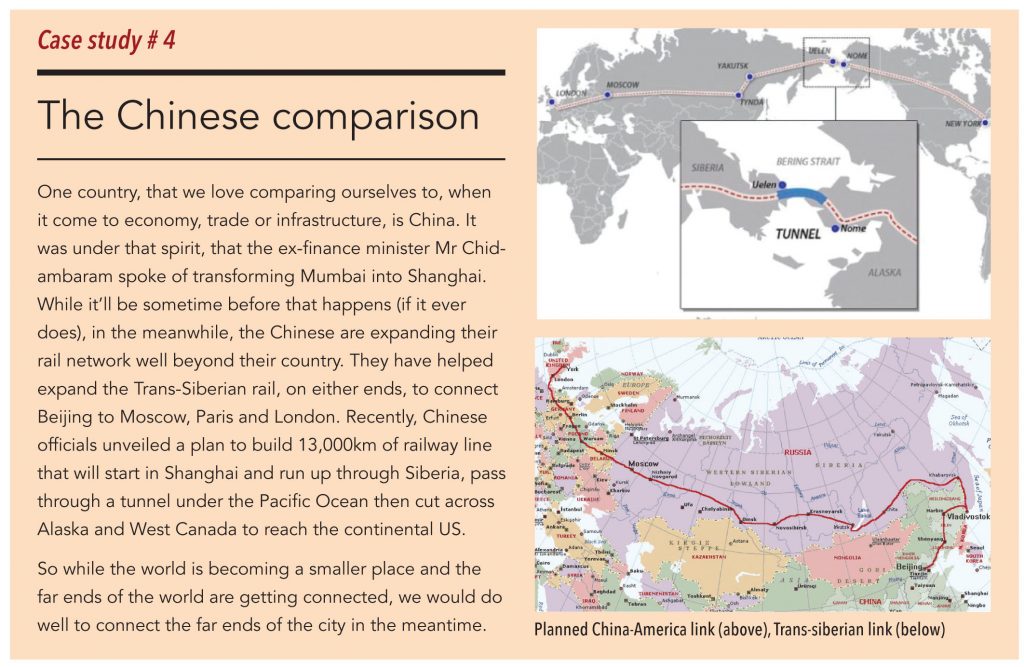Local trains are the lifeline of Mumbai – an adage that has become parlance. Spread over 465 km, the Mumbai Suburban railway (or Mumbai local as we call it) operates 2,342 train services and carries more than 7.24mn commuters daily. By annual ridership (2.64bn), it is one of the busiest rapid transit system in the world. It is broadly divided into three lines and operates through more than 125 stations.
However, the suburban rail network in MMR has its limitations too:
•Local trains have now become extremely congested and are working at many times their peak capacity.
•Trains on almost all lines already run at highest permissible frequency (during peak hours) required to avoid accidents.
•Metro/monorail projects are being designed to provide horizontal connectivity (which is as necessary as vertical) – in any case, building metro lines over existing railway lines would be re-inventing the wheel.


• And the railways (both central and western) do not have sufficient land “all-along” the existing tracks to lay another parallel track.
Hence the need was felt for an elevated or underground corridor to cater to the needs of the city. Laying them along the existing tracks would also help in capitalizing the already existing social and physical infrastructure, and provide convenience to the passengers.
Announced in the railway budget of 2007-08 and marked as one of the key PMO projects in 2013, Western Railways intends to build an elevated rail corridor which will run AC trains from Virar to Churchgate, along the existing western railway line in the city. The corridor will be 63kms long with 26 stations, and will comprise a two-track elevated corridor, with a capacity of 90,000 people per hour, per direction, along the section. The estimated cost of the project is Rs 210bn.
The feasibility study for the project has already been conducted (by RITES Ltd) and the Maharashtra government has signed a state support agreement with railways — 67% of the corridor is planned to be elevated, 20% will at ground level, and the remaining 13% will be underground. Western Railways also plans to use 130,000 sq. mt. of railways land at eight locations to generate funds for the project. The project is planned to be awarded on a BOT basis for 20 years.



Conclusion
Overall, the picture that emerges of the infrastructure of MMR is a dismal one – though one which is changing very rapidly. A lot of mega infrastructure projects have recently started operations, and many more are on the anvil. MMRDA’s plans are highly ambitious (as they always have been) but it’s the execution that remains a concern.
While it is easy to criticize the government authorities for their apathy and lack of vision towards the city infrastructure, we also acknowledge that the task of executing large scale infrastructure projects, in one of the most densely populated regions of the world is surely an arduous one. The major obstacles the authorities face in executing infrastructure projects across the city are:
1.The city is surrounded by sea from three sides which leaves little room for horizontal expansion, and all projects need to be developed along the north-south corridor.

2.The region‘s proximity to sea mean that the city has relatively ‘softer bed’ than other cities like Delhi, which are completely landlocked and have much ‘solid bed’.
3.There is no central record of the innumerable utilities and their underground network, spread across the city. It is extremely difficult to erect even a single pillar without damaging any or few of the services.
4.Multiple authorities involved in development of different projects (MMRDA, BMC, MSRDC) makes it difficult to co-ordinate at the planning/design phase itself
5.And lastly, the slum encroachment and politicization on trivial issues has led to most projects being delayed (Mumbai airport being the prime example)
However, these obstacles are not unique to Mumbai; many cities like Amsterdam, HongKong and few others around world have successfully solved similar problems. Paucity of land can be overcome by building water transport infrastructure,while utility providers can be asked to provide their network details, during the design stage itself. Benefits of technology too can be utilized, and large infrastructure projects can be executed, with much smaller space and casting yard requirement.
Vision to design projects for the future (not merely the current needs), and political will to execute projects on-time, hold the keys to long-term solution. Easier said than done, we agree, but it has been done before, and in India only (prime example being Delhi Metro). The need for a stronger resolve today, is more critical than ever as the infrastructure of city is on a brink of a collapse, and the ever increasing migration from other parts of the country is only enhancing the load on the existing infrastructure.
The gap between the existing and required infrastructure is huge, and so is the opportunity for the private companies to encash on it. MMRDA alone will spend Rs500bn over the next five years on various projects. That, coupled with some big ticket projects to be taken up by MSRDC (MTHL, BVSL, Water-Transport) and Railways (Elevated Corridor) will translate into cumulative spending of Rs975bn over the next five years. How much of that will actually materialize and lead to improvement in the infrastructure of the city – only time will tell.
Subscribe to enjoy uninterrupted access